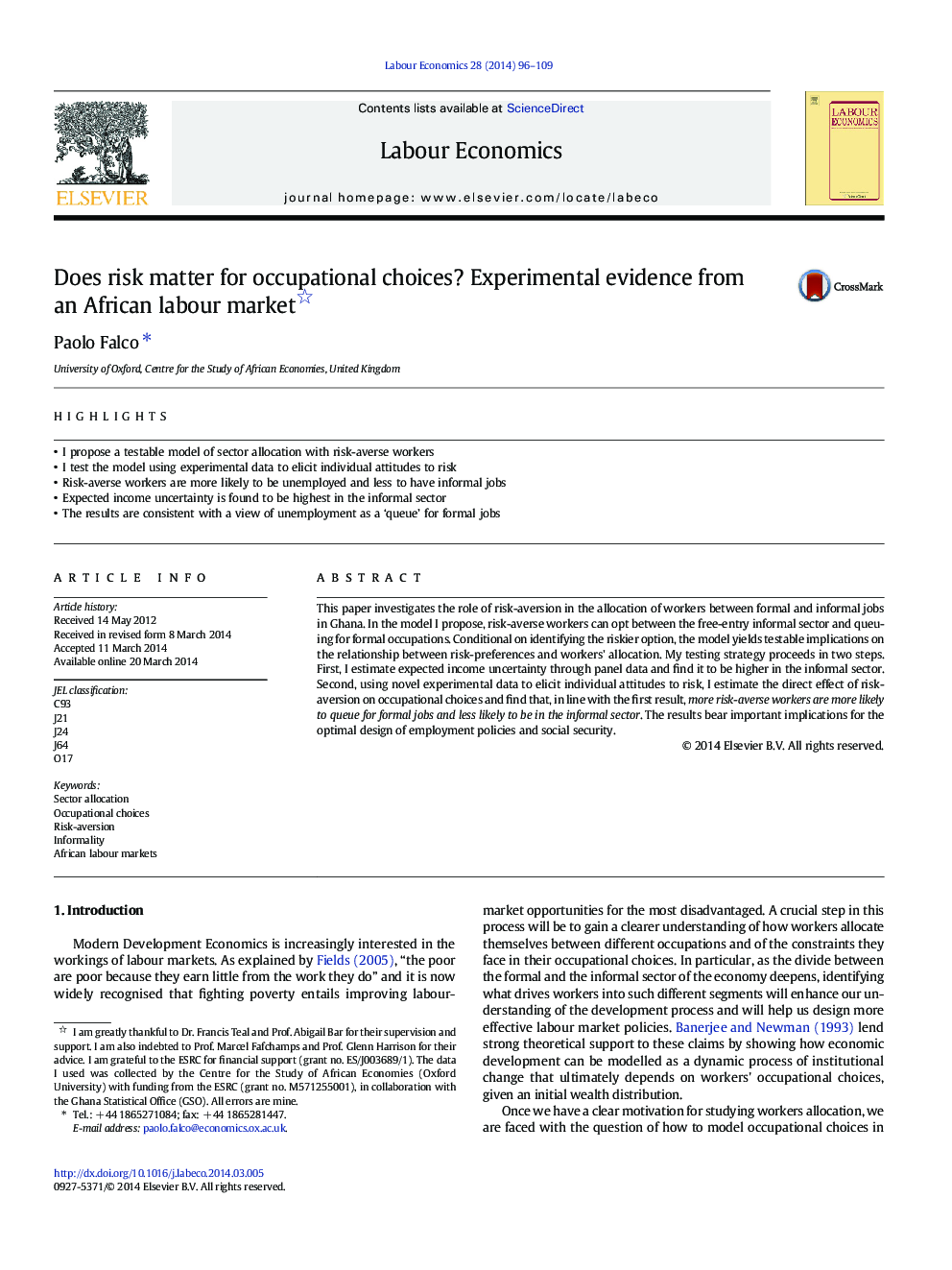| Article ID | Journal | Published Year | Pages | File Type |
|---|---|---|---|---|
| 971481 | Labour Economics | 2014 | 14 Pages |
•I propose a testable model of sector allocation with risk-averse workers•I test the model using experimental data to elicit individual attitudes to risk•Risk-averse workers are more likely to be unemployed and less to have informal jobs•Expected income uncertainty is found to be highest in the informal sector•The results are consistent with a view of unemployment as a ‘queue’ for formal jobs
This paper investigates the role of risk-aversion in the allocation of workers between formal and informal jobs in Ghana. In the model I propose, risk-averse workers can opt between the free-entry informal sector and queuing for formal occupations. Conditional on identifying the riskier option, the model yields testable implications on the relationship between risk-preferences and workers' allocation. My testing strategy proceeds in two steps. First, I estimate expected income uncertainty through panel data and find it to be higher in the informal sector. Second, using novel experimental data to elicit individual attitudes to risk, I estimate the direct effect of risk-aversion on occupational choices and find that, in line with the first result, more risk-averse workers are more likely to queue for formal jobs and less likely to be in the informal sector. The results bear important implications for the optimal design of employment policies and social security.
